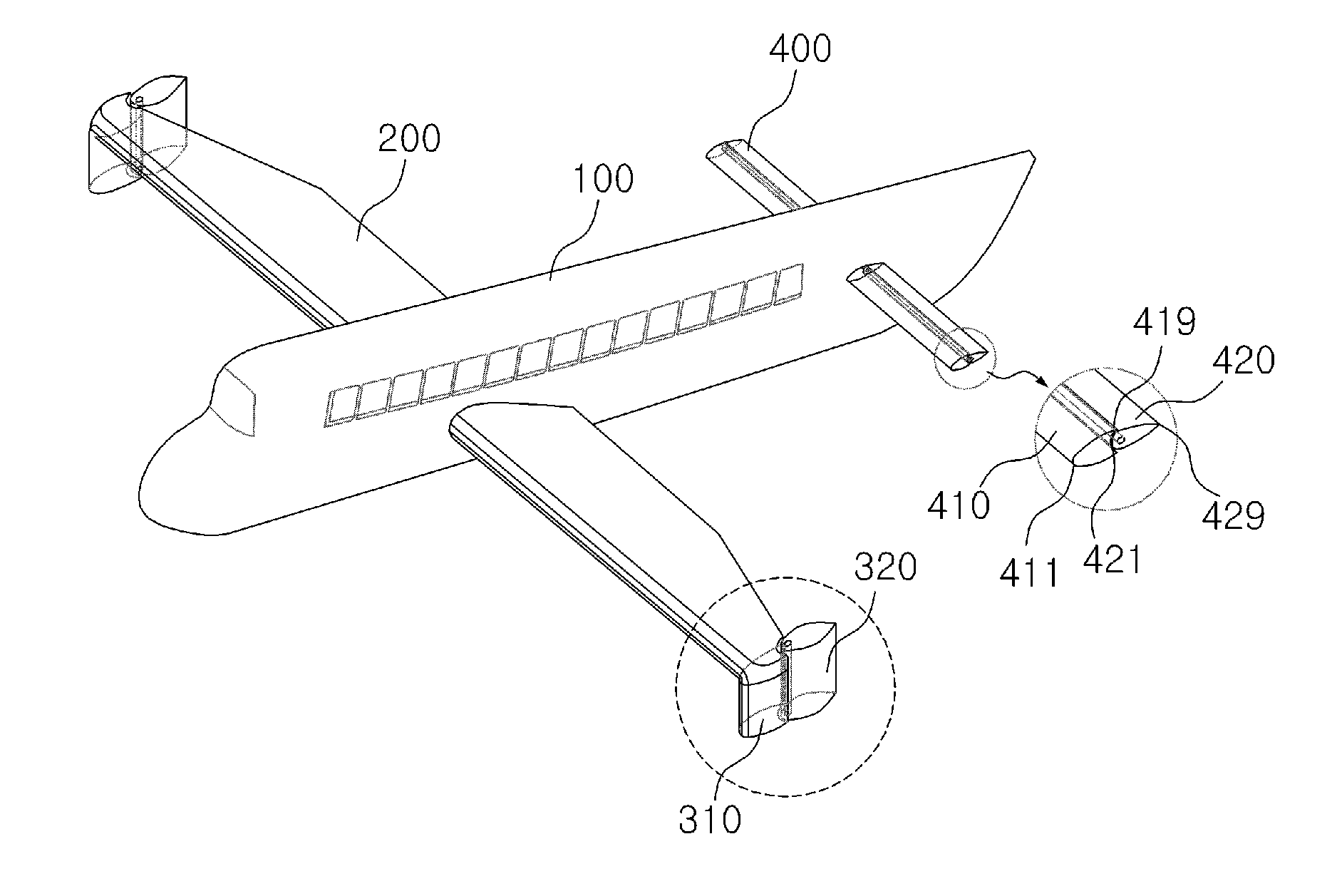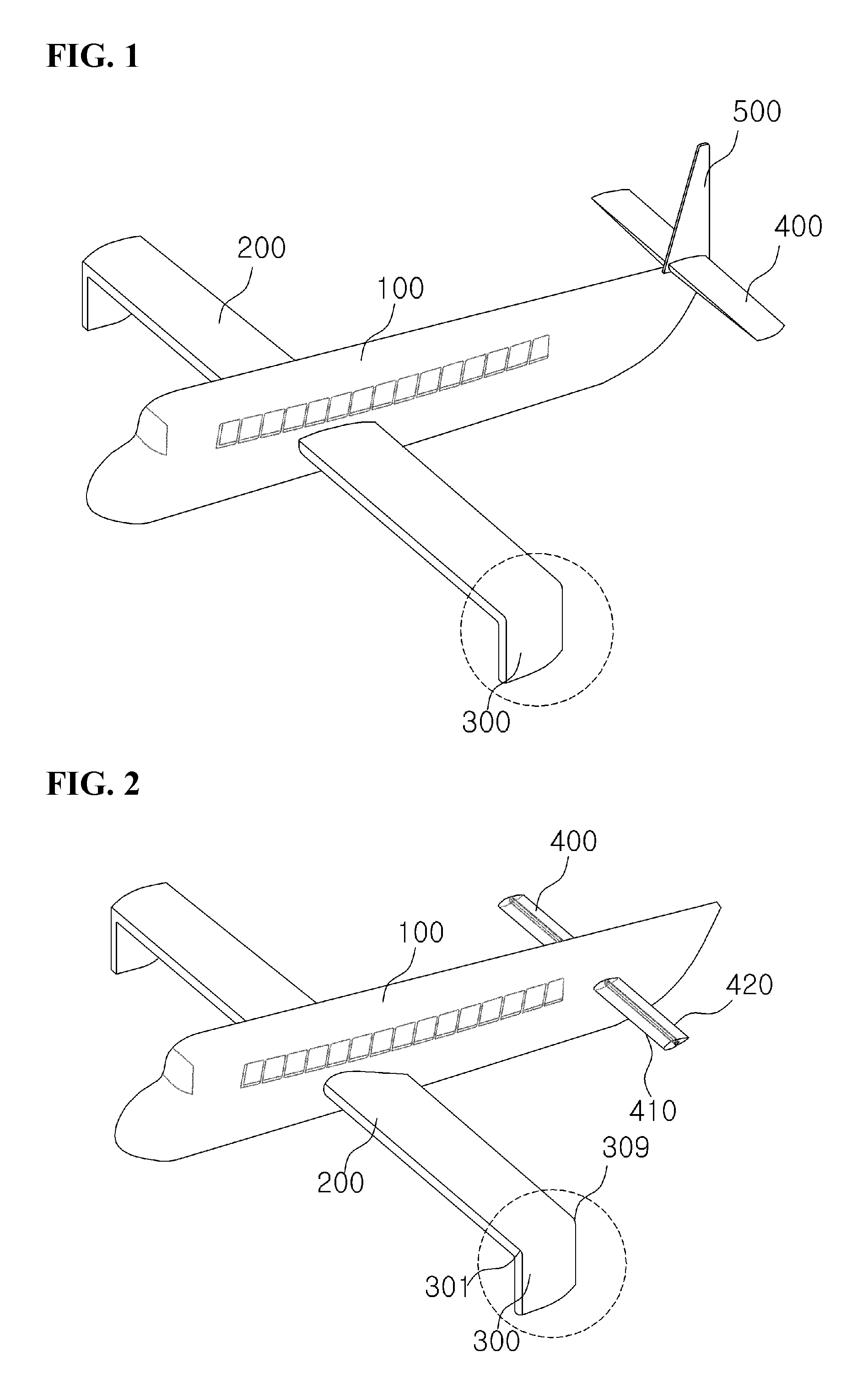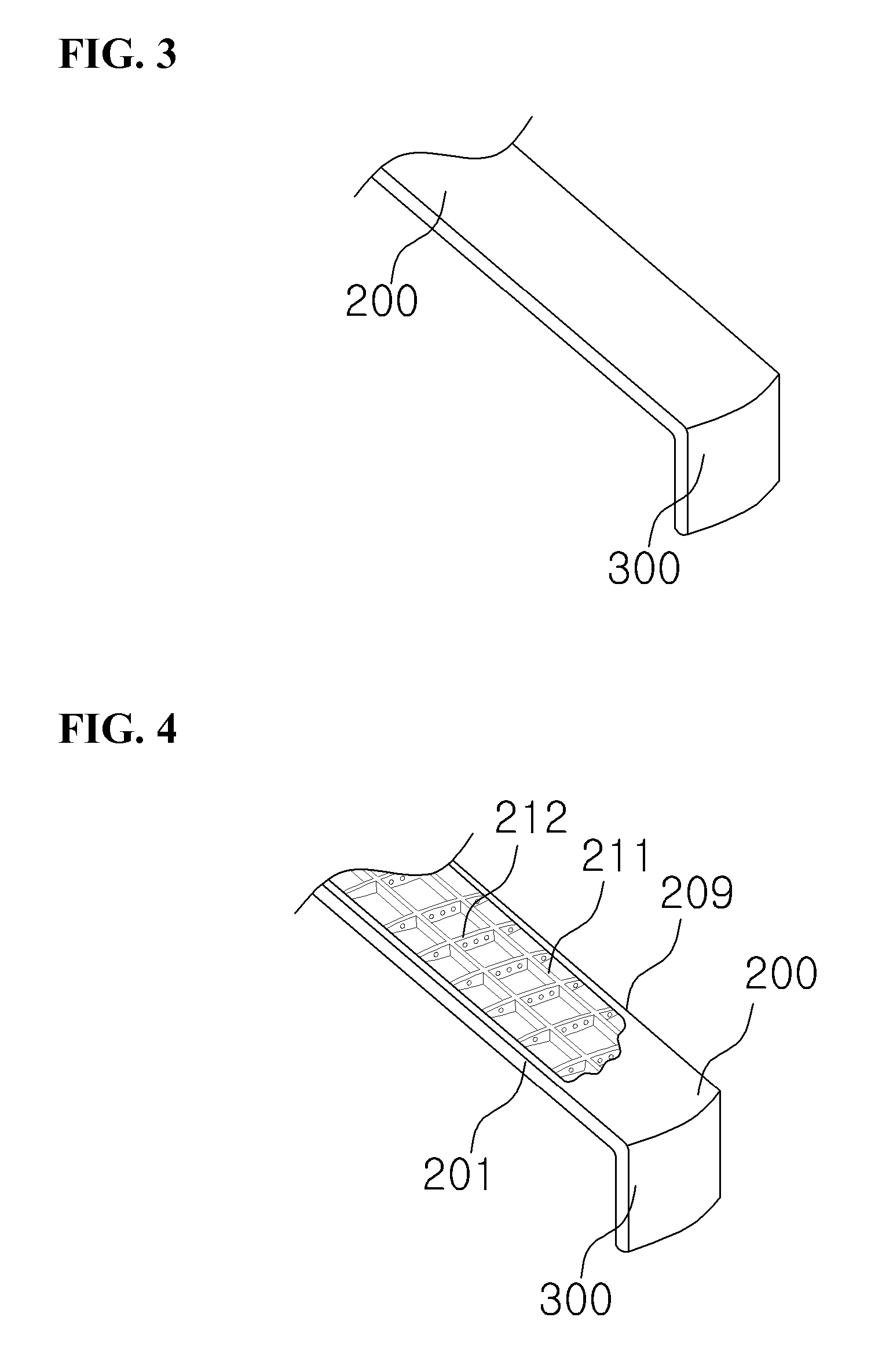Wing Structure for WIG Vehicle
a technology for wigs and wing structures, applied in the direction of valve construction, machine/engine, air-flow influencers, etc., can solve the problems of undeveloped substitutes for vertical tail wings, problems such as affecting the performance of wig craft, and increasing air resistance and therefore fuel consumption, so as to reduce the weight of wig craft, reduce the weight of wigs, and suppress vortices and induced drag
- Summary
- Abstract
- Description
- Claims
- Application Information
AI Technical Summary
Benefits of technology
Problems solved by technology
Method used
Image
Examples
second embodiment
the wing structure and the configuration of the downward wing will now be described in detail with reference to FIGS. 2 to 6.
As compared to the first embodiment, in the second embodiment, the vertical tail wing is removed, the horizontal tail wing, which had been mounted to the end portion of the body of the WIG craft, is mounted at the rear side of the body that is positioned forward from the end portion, and the shape and structure of the horizontal tail wing are modified.
Particularly, the downward wing 300 is seamlessly connected to an end of the main wing 200 such that it extends downwards from the end of the main wing. The downward wing has a streamlined cross sectional shape in which a leading edge 301 is formed as a smooth round, and in the lengthwise direction from the leading edge 301 to the tailing edge 309, the width of the streamline increases from the vertex of the leading edge 301 to a position of between 3 / 10 and 4 / 10 of the length of the streamline, and the width of ...
third embodiment
the wing structure for a WIG craft will now be described with reference to FIGS. 7 to 11.
As shown in the drawings, the wing structure for a WIG craft includes a main wing 200 protruding outwards from the side middle portion of the body of the WIG craft, a downward wing 300 seamlessly extending vertically downwards from an outer end of the main wing 200, and a horizontal tail wing 400 extending horizontally outwards from the rear portion of the body of the WIG craft. The downward wing 300 includes a downward panel 310 integrally extending downwards from the end of the main wing 200, and a rudder unit 320 movably mounted onto a rear surface of the downward panel 310. Here, the downward wing 300, including the rudder unit 320, includes a frontal section including a leading edge 321 and a rear section including a tailing edge 329, wherein the frontal section has a round cross sectional shape with a proper thickness in order to prevent flow separation from occurring, and the rear section...
fourth embodiment
the wing structure for a WIG craft will now be described with reference to FIGS. 12 to 17.
The fourth embodiment illustrates the configuration in which while the shapes of the downward panel 310 and the rudder unit 320 are the same, the coupling structure thereof is different. That is, the vertical width of the rudder unit 320 is smaller than that of the downward panel 310, and the downward panel 310 is provided in the rear surface with a receiving groove 317 which is large enough to receive the rudder unit 320. Thus, the rudder unit 320 is mounted in the receiving groove 317 in the rear surface of the downward panel 310. In the wing structure for a WIG craft, the functions and shapes of the respective parts may be the same, so a detailed description thereof will be omitted.
As shown in FIGS. 15 and 16, the shape of the lower portion is shaped like an arch, which is a round circular shape, or a streamlined “V.” This is for upon movement of the WIG craft, maximally reducing friction wi...
PUM
 Login to View More
Login to View More Abstract
Description
Claims
Application Information
 Login to View More
Login to View More - R&D
- Intellectual Property
- Life Sciences
- Materials
- Tech Scout
- Unparalleled Data Quality
- Higher Quality Content
- 60% Fewer Hallucinations
Browse by: Latest US Patents, China's latest patents, Technical Efficacy Thesaurus, Application Domain, Technology Topic, Popular Technical Reports.
© 2025 PatSnap. All rights reserved.Legal|Privacy policy|Modern Slavery Act Transparency Statement|Sitemap|About US| Contact US: help@patsnap.com



